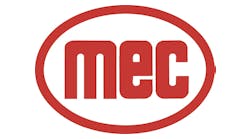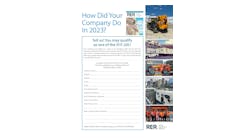United Rentals posted full-year rental revenue of $1.83 billion in rental revenue for the full year 2009, a not unexpected 26.7-percent year-over-year decline compared with $2.496 billion in 2008. Rental revenue for the fourth quarter was $450 million, compared with $606 million for the same period in 2008, a 25.7-percent drop.
Total revenues for 2009 were $2.358 billion, compared with $3.267 billion in 2008, a 27.8-percent plunge. Fourth-quarter total revenues were $557 million compared with $791 million for Q408, a 29.6-percent decline.
For the fourth quarter 2009, on a GAAP continuing operations basis, United Rentals posted a loss of $24 million, or $0.39 per diluted share, compared with a loss of $853 million ($14.25 per diluted share) for the fourth quarter of 2008. The adjusted EBITDA margin for the quarter, which excludes the impact of restructuring and impairment charges, was 26.8 percent.
For the full year, on a GAAP continuing operations basis, the company reported a loss of $60 million, or $0.98 per diluted share, compared with a loss of $704 million ($12.62 per diluted share), for 2008.
Total debt at year-end 2009 decreased by $270 million compared with year-end 2008, and net debt, which includes the impact of cash and equivalents, decreased by $362 million, with no significant debt maturities until 2013. SG&A expense dropped $20 million for the fourth quarter year-over-year and decreased $101 million for full-year 2009 compared with 2008.
Time utilization was 61.8 percent for the fourth quarter and 60.7 percent for the full year, decreases of 2.4 percentage points and 2.9 percentage points respectively compared with 2008. Dollar utilization was 46 percent for the fourth quarter and 45.5 percent for the full year.
“We can point to a number of significant contrasts between the strategic progress we made as a company in 2009 and our operating environment,” said CEO Michael Kneeland. “Externally, the economy took a toll on our end markets, with the expected constraint on our revenues and margins. We responded with disciplined cost cutting and capital management, improving our free cash flow and SG&A reduction beyond projections.”
Kneeland said the current economic environment is similar to the last half of 2009, but remains bullish on the company’s prospects in 2010. “Despite the challenges of a lingering downturn, we believe that the transformation of our customer service and sales operations, and our strong capital structure, put us in a unique position to gain share that will be accretive to earnings over time. We are becoming increasingly adept at balancing local market development with the pursuit of national accounts, industrial accounts and government business — the segments most closely aligned with our strategy for long-term profitable results.
“Realistically, it’s going to be another tough year. In our opinion, a turnaround in construction will happen sometime in the back half of 2010, but we won’t see any significant improvement in our end markets until 2011, and when that happens, we think the recovery will be slow and steady, and that seems to be the consensus of the industry forecasters as well.”
Kneeland said that if the worst of the cycle has passed, then the majority of branch closures, fleet reductions and workplace reductions will have already occurred.
United closed 64 branches in 2009 and added four specialty locations. It reduced fleet by 9 percent based on original equipment cost. “But if you unbundle that number, you would see investments in earth moving, light towers, and other strategic purchases,” Kneeland told an investors’ conference call.
Kneeland said for the full-year rates were down 11.8 percent, but the company is not satisfied with that number. “You could say our approach to rate management is a mix of brains and brawn,” he said. “By brains, I’m referring to our strategy, and it’s focused on profitability. The brawn is being provided by our new price optimization program, and this is just one of the strategies that are helping us transform our business along with salesforce automation and additional changes to our branch operations.”
United continues to grow in the national-account and industrial segments. Of the 233 national account agreements United Rentals signed in 2009, 62 were industrial companies, Kneeland said.
Based in Greenwich, Conn., United Rentals is No. 1 on the RER 100.





